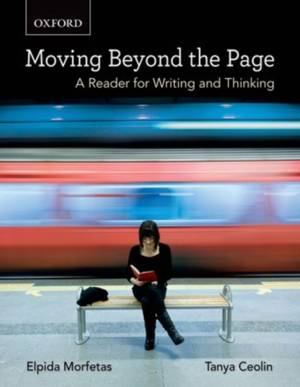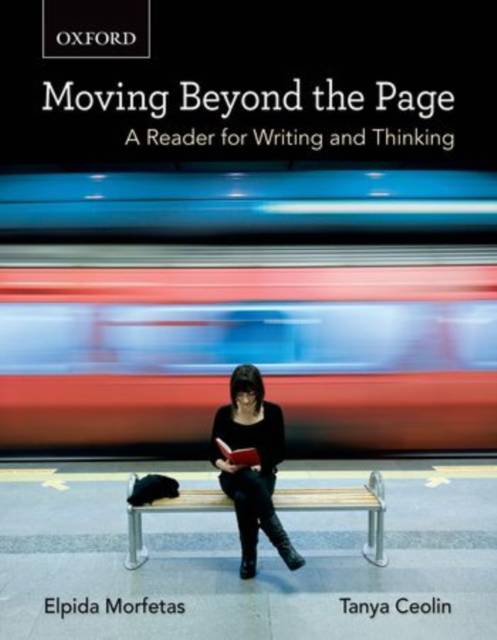
- Afhalen na 1 uur in een winkel met voorraad
- Gratis thuislevering in België vanaf € 30
- Ruim aanbod met 7 miljoen producten
- Afhalen na 1 uur in een winkel met voorraad
- Gratis thuislevering in België vanaf € 30
- Ruim aanbod met 7 miljoen producten
Zoeken
Moving Beyond the Page
A Reader for Writing and Thinking
Elpida Morfetas, Tanya Ceolin
Paperback | Engels
€ 55,95
+ 111 punten
Omschrijving
Moving Beyond the Page is a pedagogically rich collection of nonfiction and fiction pieces designed to help students-particularly non-English majors at the college level-develop skills in literary analysis. The text's 40 selections-fiction and nonfiction in equal numbers-feature a broad spectrum of writers, from well known (Oscar Wilde) to lesser known (Karim Rashid), Canadian (Emily Carr) to international (Jorge Luis Borges), current (Joseph Boyden) to immortal (Tolstoy). Yet while the writers have been carefully chosen for their diversity of age, ethnicity, and social background, their writings relate through a number of common themes highlighted in an alternative table of contents. The thematic table of contents encourages students to make connections between fiction and nonfiction writings on such topics as poverty and debt, cultural and social pressure, sexual politics and gender, faith and spirituality, and the immigrant experience.
Each of the book's 40 selections is preceded by a set of tools designed to prepare readers for the essay or story they are about to encounter and help them connect to it on a personal level. These include a biocritical introduction to the author; a series of quotations by the author, which give some insight into his or her writing philosophy; and a short series of pre-reading questions that invite students to consider their own experience of events similar to those described in the selection. Following each selection is a lexicon of idioms and references that readers (especially EAL learners) may not be familiar with, as well as a glossary of the selection's more challenging words, designed to build students' vocabulary. Comprehension and analysis exercises challenge students' grasp of the content and meaning of what they have read, while essay questions propose some topics for research or reader-response assignments. An end-of-book glossary-'The Writer's Toolbox'-is a useful resource for information on literary terms and concepts such as atmosphere, irony, and metaphor.
Each of the book's 40 selections is preceded by a set of tools designed to prepare readers for the essay or story they are about to encounter and help them connect to it on a personal level. These include a biocritical introduction to the author; a series of quotations by the author, which give some insight into his or her writing philosophy; and a short series of pre-reading questions that invite students to consider their own experience of events similar to those described in the selection. Following each selection is a lexicon of idioms and references that readers (especially EAL learners) may not be familiar with, as well as a glossary of the selection's more challenging words, designed to build students' vocabulary. Comprehension and analysis exercises challenge students' grasp of the content and meaning of what they have read, while essay questions propose some topics for research or reader-response assignments. An end-of-book glossary-'The Writer's Toolbox'-is a useful resource for information on literary terms and concepts such as atmosphere, irony, and metaphor.
Specificaties
Betrokkenen
- Auteur(s):
- Uitgeverij:
Inhoud
- Aantal bladzijden:
- 440
- Taal:
- Engels
Eigenschappen
- Productcode (EAN):
- 9780195439496
- Verschijningsdatum:
- 30/11/2011
- Uitvoering:
- Paperback
- Formaat:
- Trade paperback (VS)
- Afmetingen:
- 178 mm x 229 mm
- Gewicht:
- 657 g

Alleen bij Standaard Boekhandel
+ 111 punten op je klantenkaart van Standaard Boekhandel
Beoordelingen
We publiceren alleen reviews die voldoen aan de voorwaarden voor reviews. Bekijk onze voorwaarden voor reviews.











